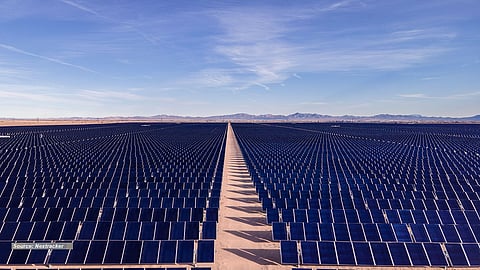

Solar trackers have evolved as crucial components of utility-scale solar applications, addressing the inherent inefficiencies of fixed installations. The growing importance of solar trackers is further emphasized by their compatibility with bifacial modules, which have become mainstream in utility-scale applications. This combination is bringing increasingly synergistic benefits to power production.
The transformation taking place in the solar tracker landscape is a dynamic one. With this 3rd edition of the TaiyangNews Market Survey on Solar Trackers, we extend our coverage to provide a comprehensive overview of important developments in the tracker segment, from noteworthy technological improvements to emerging trends and a detailed product showcase. This survey edition features 26 products from 14 companies, including most market leaders in the segment.
In the bifurcation of trackers, single-axis trackers have become synonymous with the term 'trackers' in the field, while dual-axis trackers are also covered more deeply in this edition. Trackers were in high demand during times of high module prices, as they help realize the target power of a project with fewer modules compared to fixed-tilt mounting. However, these sun-tracking systems are still finding a business case in the current market conditions of rock-bottom prices for modules and inverters. Projects may now have sufficient budgets to include trackers, as they ultimately increase energy yield, which every project owner is looking for.
The tracker segment is enjoying a ‘pull’ effect also on the demand side. Investors and developers are now more informed about the feasibility and effectiveness of trackers, and larger developers are pushing for trackers in more and more markets. As a result, trackers are now deployed even in regions historically known to favor fixed systems. The global tracker market has seen accelerated growth over the last 2 years, especially in the US, Europe, and a few emerging markets in Asia-Pacific and Brazil (see Global Solar PV Tracker Shipments In 2023 Totaled 92 GW DC).
Beyond the core function of maximizing energy capture, today's trackers are embracing cutting-edge technologies, with AI-powered controllers and sophisticated algorithms optimizing tracking performance. The major emphasis is on maximizing sunlight absorption by positioning the modules at an optimal angle and avoiding shading to get the best out of the shading situation. One tracker supplier even offers a smart shading function for half-cell modules, where the module is intentionally shaded at the bottom to optimize the inclination angle for better yield. The next step is optimizing panel positioning in diffused light conditions, such as cloudy days. The new-generation algorithms are also smart enough to differentiate between a passing cloud and a cloudy day.
Solar projects increasingly encounter complex terrain as flat land becomes less easy to access and more expensive in mature markets. Traditional tracker designs require costly land grading or increased pier length to function on uneven ground, both of which raise project costs and environmental impacts. The best and the most popular solution is adapting trackers to the terrain, minimizing the need for extensive grading and sparking significant interest in the industry.
The tracker segment is also exploring exciting new applications. Integration with agrivoltaics – the colocation of solar panels and agriculture – is creating a win-win for land use. Trackers are also handy to mitigate noon peaks effectively by adjusting the modules’ optimal position. In the end, everything boils down to costs in PV; thus, we have also provided a few price points for different trackers. In addition to summarizing these key developments, the survey also lists key specifications of products and corresponding detailed product descriptions.
During the TaiyangNews Virtual Conference on Solar Power Plant Developments 2024, Nicolas Peinemann, sales director IBERO America region at Antai Solar, presented on the topic "Lightweight Pre-fabricated Tracker Design With Improved Control Algorithm Saves Costs, Time, And Delivers High Tracking Accuracy" (see Antai Solar’s Light Pre-fabricated Tracker With Improved Control Algorithm).
The text is the executive summary of the TaiyangNews Solar Trackers Market Survey 2024, which can be downloaded for free here.
